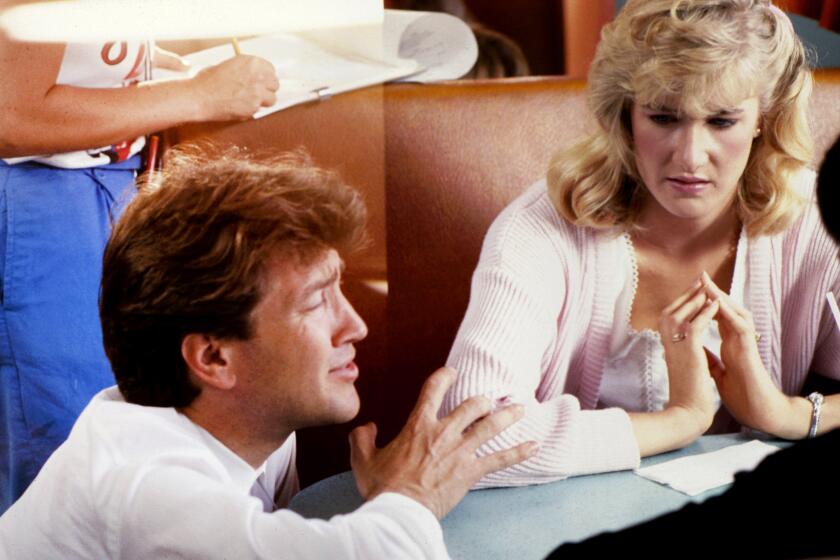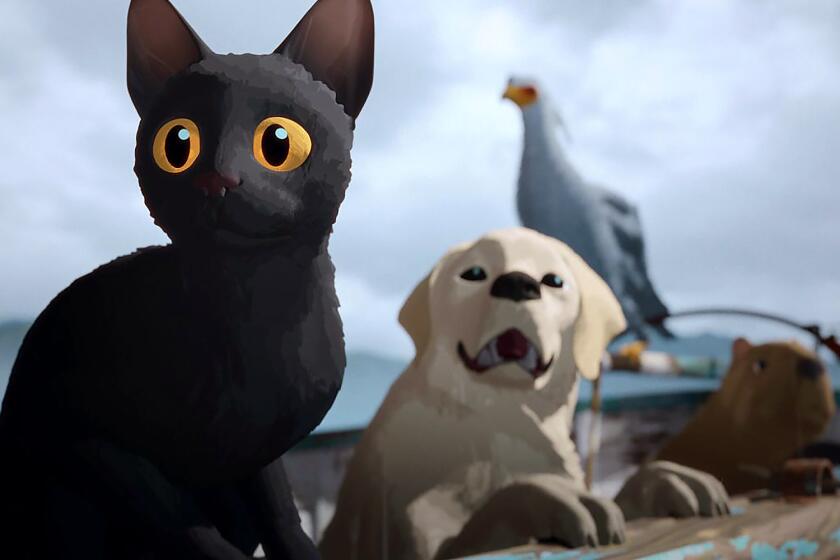It’s All in the Details
- Share via
John Gaeta, “The Matrix” * The visual effects supervisor says digital animation was especially effective for a film exploring the complexities of a virtual world.
*
For the record:
12:00 a.m. April 2, 2000 For the Record
Los Angeles Times Sunday April 2, 2000 Home Edition Calendar Page 103 Calendar Desk 1 inches; 23 words Type of Material: Correction
Actor--Robert Taylor was pictured in a “Matrix” photo last Sunday. An incorrect name was given due to incorrect information from the film’s studio, Warner Bros.
In last summer’s digital thriller “The Matrix,” visual effects supervisor John Gaeta helped create a world in which men leap across skyscrapers, women run along walls, and metallic creatures suck the energy from infants in vast “baby farms.” But the last thing this self-described “virtual cinematographer” wants to do is talk about how he did it.
“Everyone wants to talk about technique,” says Gaeta, who shares the nomination with three other members of the team he led. “I have to keep reminding people that the point isn’t the glam of the shot, but how it reinforces a theme.”
Still, certain scenes from “The Matrix” inspire the sort of slack-jawed response that demands an answer to the question: How’d they do that? Take, for instance, the climactic sequence in which a brooding hacker played by Keanu Reeves and a villainous computer agent are suspended midair trading kung fu chops and gunshots, the camera doing corkscrews around the action as if mounted on a hummingbird.
“That shot may be the most difficult piece of film ever captured in a movie,” he says. “It was immense, totally immense.”
The sequence was created using a technique involving a series of still images scanned into a computer and digitally processed to provide motion--much in the way animators draw frames to move characters from one pose to another. Since “The Matrix,” the process has been reproduced in car commercials and music videos, transformed in a few short months from a revelation to a cliche.
“It’s already archaic,” Gaeta says. “Now we’re moving toward a place where the camera will be totally separated from time and space.”
Ninety-eight percent of the special effects in “The Matrix”--everything from the hyper-realistic fight scenes to the jellyfish-shaped spacecraft--were created using digital animation. That was the natural choice for a film that explored the complexities of a virtual world. “All the bizarre nuances played right into the point of the movie,” Gaeta says. “Glitches became a visual effect. Really, you couldn’t lose.”
Gaeta’s previous credits include “What Dreams May Come,” “Eraser” and “Judge Dredd.” But he says designing visual effects for the Wachowski brothers on “The Matrix” was a new experience entirely.
“Usually the production will put visualization people off site and they’ll review their work periodically,” he says. “But the Wachowski brothers involved us in the whole process. This is the first project where we had artists working with the production from Page 1 all the way to the end.”
Gaeta is just beginning work on the next two installments of “The Matrix,” which are being produced back to back. Don’t expect a rehash of the effects created for the original, he says. “We’re going much deeper and much freakier.”
More to Read
Only good movies
Get the Indie Focus newsletter, Mark Olsen's weekly guide to the world of cinema.
You may occasionally receive promotional content from the Los Angeles Times.










